A Sparkling Wine Tasting
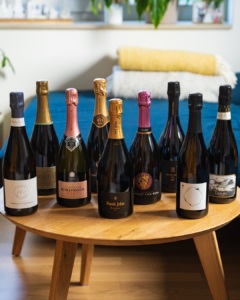
It took me more than a month to find the time to write about the latest tasting by our wine regular’s table. We chose the topic of German sparkling wines and of course I mixed in a little surprise.

Contrary to champagne, German sparkling wine can come from all the German wine growing regions. Yet, our tasting was dominated by wines from the palatine region. The important thing to watch out for is the term ‘traditional bottle fermentation’ when shopping for German Sekt.
A rather limited bottling
We started the tasting, with the Christmann & Kaufmann Cuvée 104. For this relatively new sparkling wine producer Steffen and Sophie Christmann cooperate with Mathieu Kaufmann, who previously worked for Von Buhl and Bollinger. The Riesling sparkling wine itself comes from 15 to 35-year-old vines. The base wine uses stainless steel as well as big oak barrels. Furthermore, the sparkling wine rests for 32 months on the yeast.
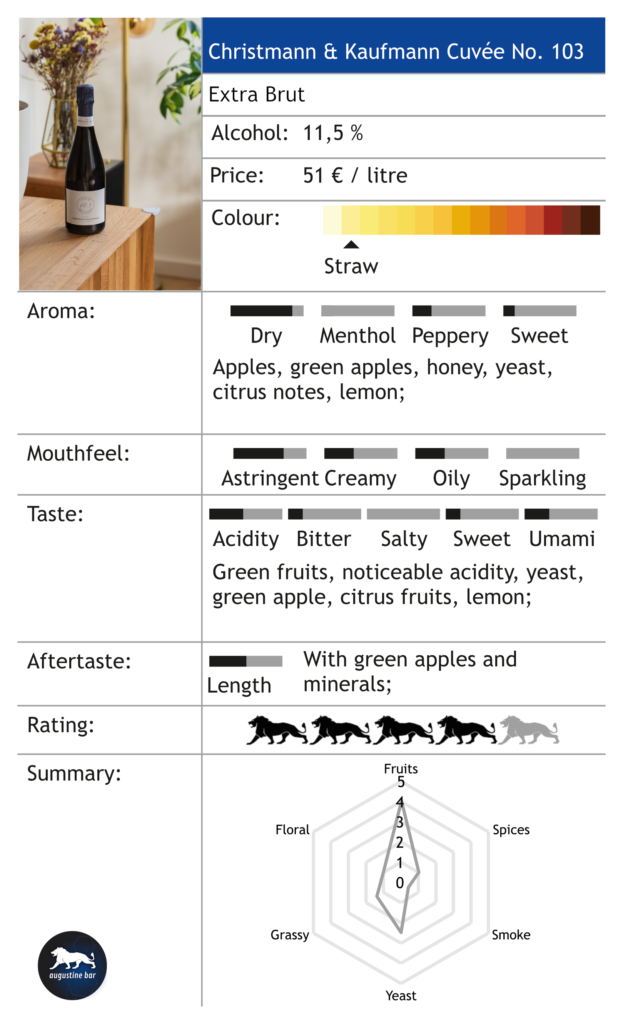
All things considered, this is already quite the impressive sparkling wine. Yes, it is very dry with some noticeable acidity. Yet, you also get some beautiful honey and yeast notes. I am definitely curious about the next wines from this producer.
Spontaneous fermentation through and through
The next wine came from Frank John. Mr. John consults a large number of vineyards on biodynamic cultivation. He only grows Riesling as well as Pinot Noir on his own vineyard. Moreover, he not only lets the base wine ferment naturally, but also uses grape must for the second fermentation in the bottle. We went for his bottling which spent 50 months on the yeast.
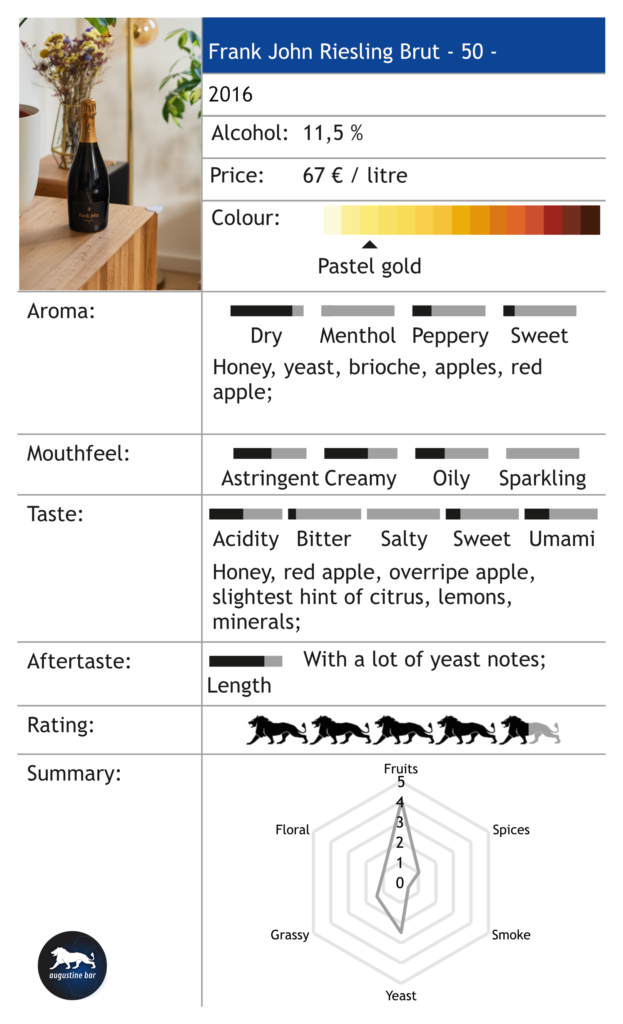
It was impressive to see how different sparkling wines from the same grape variety can taste. The Frank John Riesling 50 had a lot of ripe apple notes in combination with pronounced autolytic flavours. You definitely did notice the longer rest on the yeast. No wonder that it was very well received by most tasters.
A sparkling wine for friends
We really like sparkling wines from the Krack Sekthaus. This is why, I definitely wanted to include one of their bottlings. The Freundeskreis is their top cuvée using the classic champagne grapes with 50 % Chardonnay, 35 % Pinot Noir and 15 % Pinot Meunier. The wine spends 40 months on the yeast in the bottle.
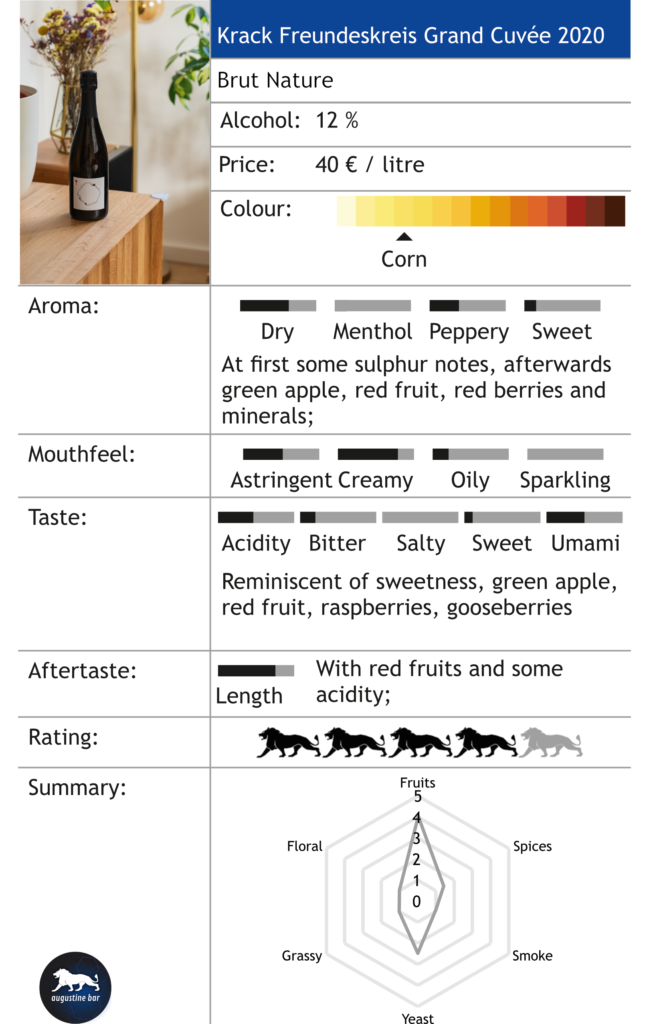
I missed the 2019 vintage when buying the Freundeskreis. Therefore, the 2020 vintage was freshly disgorged. This means that there were some sulphur notes at the beginning. Afterwards, you can find green apple, red fruit, red berries and minerals with even more berries on the palate. It definitely needs a little more rest, but you can already see the potential.
False friend
I smuggled in a bottle champagne, because no tasting is truly complete without them. So I chose the Bollinger Rosé. The maturation of the base wines takes place in wooden barrels, large proportion of reserve wines aged between five and 15 years in magnum bottles gets added.
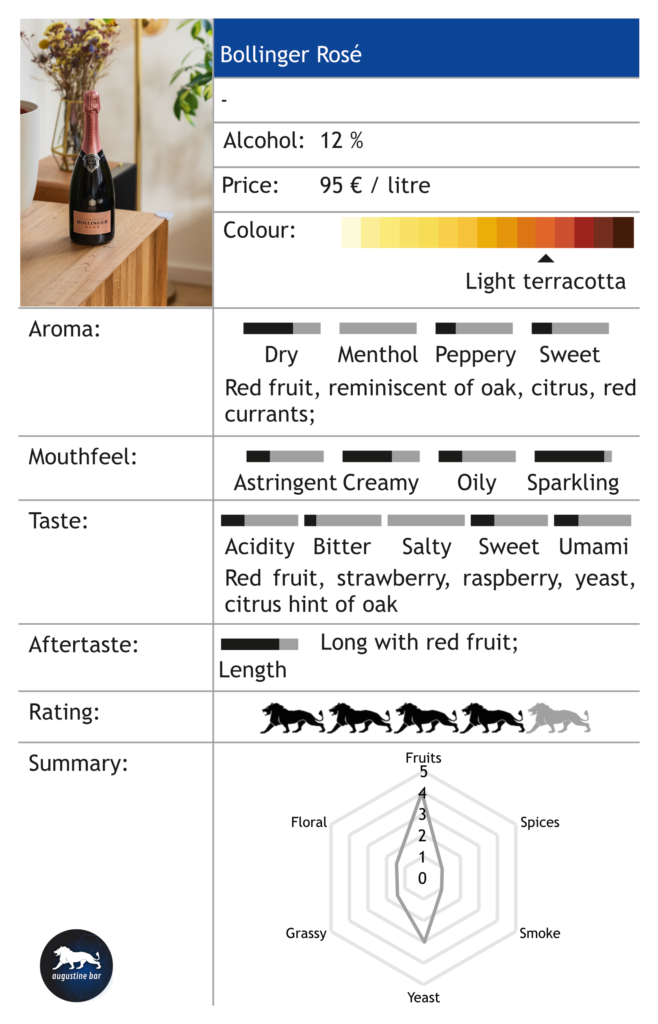
The rosé delivers typical red fruit notes with hints of oak and berries. Yet, it beautiful balanced with not too much sweetness. This way, it is easy to see why the Bollinger Rosé is such a crowd pleaser, but it also means that this Bollinger is not as interesting as other sparkling wines in this tasting.
Strong competition
It was not a coincidence that I included the Von Buhl Prestige Rosé in this tasting. Some might say that this tries to be competition for the aforementioned bottle. The sparkling wine is aged in stainless steel tanks and 500 l wooden barrels. After the second fermentation the Sekt spends 96 months on the lees.
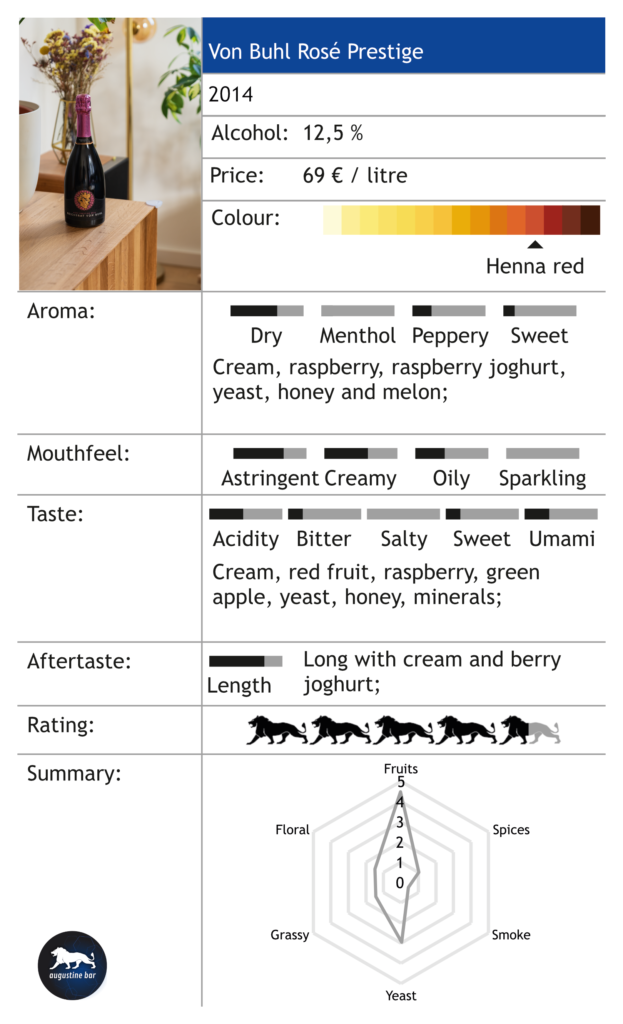
The interesting thing about the Prestige Rosé are its lactic notes. They result in cream and raspberry yoghurt flavours in combination with the red berries from the pinot noir. Additionally, you can also taste some yeast notes. This way the sparkling wine did polarize the tasters, but also received some high ratings.
Quite new Pinot Blanc
Just before the tasting in December 2024, Griesel & Compagnie brought four new sparkling wines from single vineyards to the market. I just had to include one of them, too. So, I went for the Pinot Blanc Auerbacher Hollberg from the 2019 vintage. Griesel use French oak barrels for the vinification of the base wines. The Sekt then spends 45 months on the yeast in the bottle.
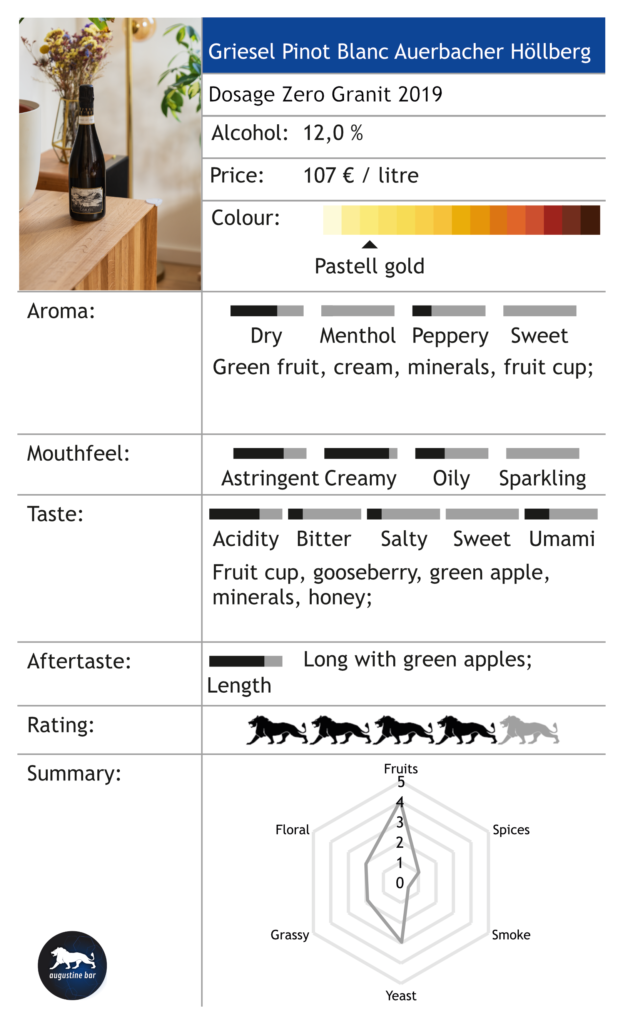
Yes, this also was quite the ‘young’ sparkling wine. You definitely notice that, but at the same time the Sekt already was promising. It had some exotic fruit notes in combination with a lot of minerality. You definitely should give this Pinot Blanc a few more months or even years in your cellar.
Another champagne?
The next sparkling wine did confuse the tasters again. More than one thought that this was a Grand Cuvée champagne. It really was a Grand Cuvée, but from Griesel & Compagnie. Especially, it was the Reserve which spent 81 months on the lees.

The Griesel Grand Cuvée Reserve delivers a great flavour with a lot of yeast and brioche notes. Yet, the red fruits and berry notes still are quite present in the aroma and the taste. I just loved the taste and would easily prefer this over a similar priced champagne.
Another Grand Cuvée
Obviously, I had to include a Raumland in the tasting. In this case, the Triumvirat XIV which is a blend of 50 % Chardonnay, 35 % Pinot Noir and 15 % Pinot Meunier. The sparkling wine spends over 100 months on the yeast in the bottle.
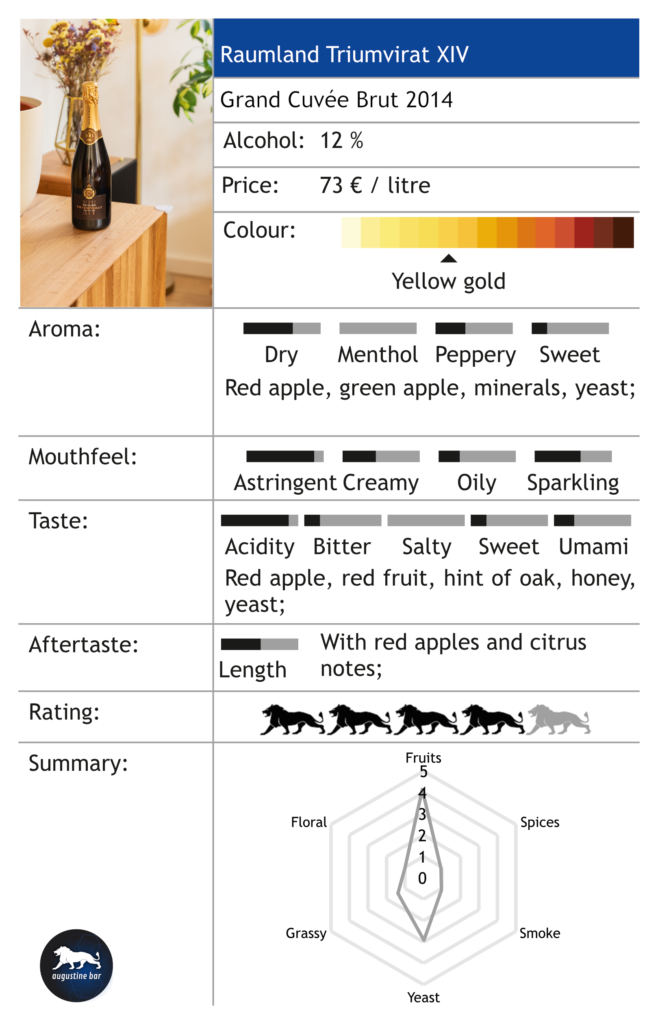
It might be that I expected more, or that the placement of the wines in the tasting was a bit unfortunate. Yet, the combination of red and green apples as well as some honey notes still is very tasty. My wife even enjoyed the Triumvirat the most in this tasting.
Late Disgorged
Some time ago I had a late disgorged champagne and was not that impressed by it. Yet, I was intrigued by the Pi No Gold sparkling wine from Oekonomierat Rebholz. The cuvée of 90 % pinot noir and 10 % chardonnay spend around 15 years on the yeast in the bottle.
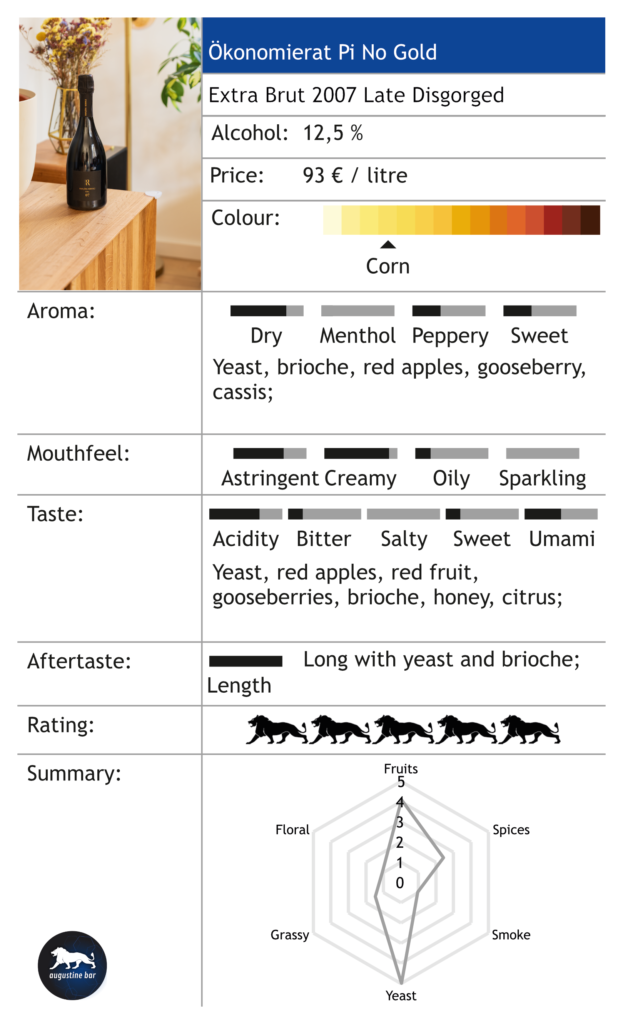
Yes, the taste was very dominated by the yeast and brioche notes. However, the Pi No still had some freshness to it. Obviously, since pinot noir makes up the lion’s share of the cuvée, you can find a lot of red fruits in the taste. Apart from that, I also got a touch of citrus towards the end of the sip.
*The fact that I received a product reviewed in this article for free, did not – in any way – influence the rating of said product. The Bollinger Rosé was provided by Wein Art.


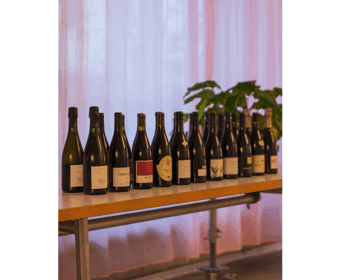
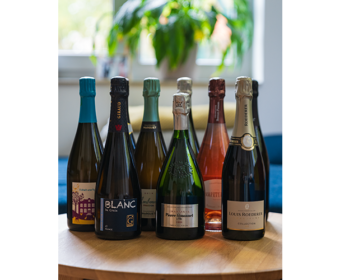
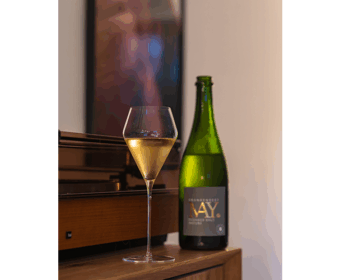
One thought on “A Sparkling Wine Tasting”